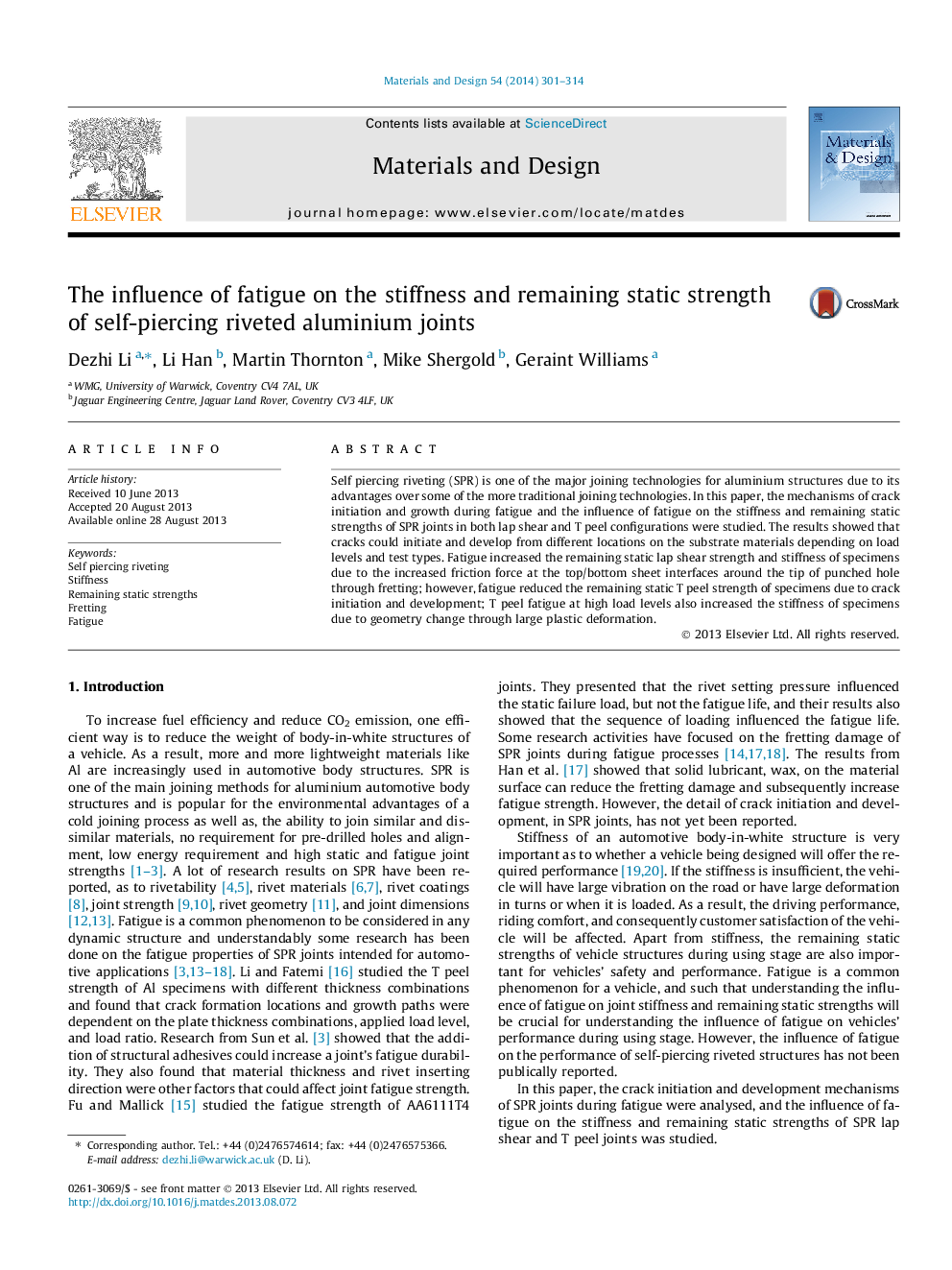| Article ID | Journal | Published Year | Pages | File Type |
|---|---|---|---|---|
| 829642 | Materials & Design (1980-2015) | 2014 | 14 Pages |
•The crack initiation and growth mechanisms for lap shear and T peel specimens during fatigue were investigated.•The influence of fatigue on remaining static strengths was investigated.•The influence of fatigue on joint stiffness was studied.•The influence of fretting on fatigue strength was analyzed.
Self piercing riveting (SPR) is one of the major joining technologies for aluminium structures due to its advantages over some of the more traditional joining technologies. In this paper, the mechanisms of crack initiation and growth during fatigue and the influence of fatigue on the stiffness and remaining static strengths of SPR joints in both lap shear and T peel configurations were studied. The results showed that cracks could initiate and develop from different locations on the substrate materials depending on load levels and test types. Fatigue increased the remaining static lap shear strength and stiffness of specimens due to the increased friction force at the top/bottom sheet interfaces around the tip of punched hole through fretting; however, fatigue reduced the remaining static T peel strength of specimens due to crack initiation and development; T peel fatigue at high load levels also increased the stiffness of specimens due to geometry change through large plastic deformation.
